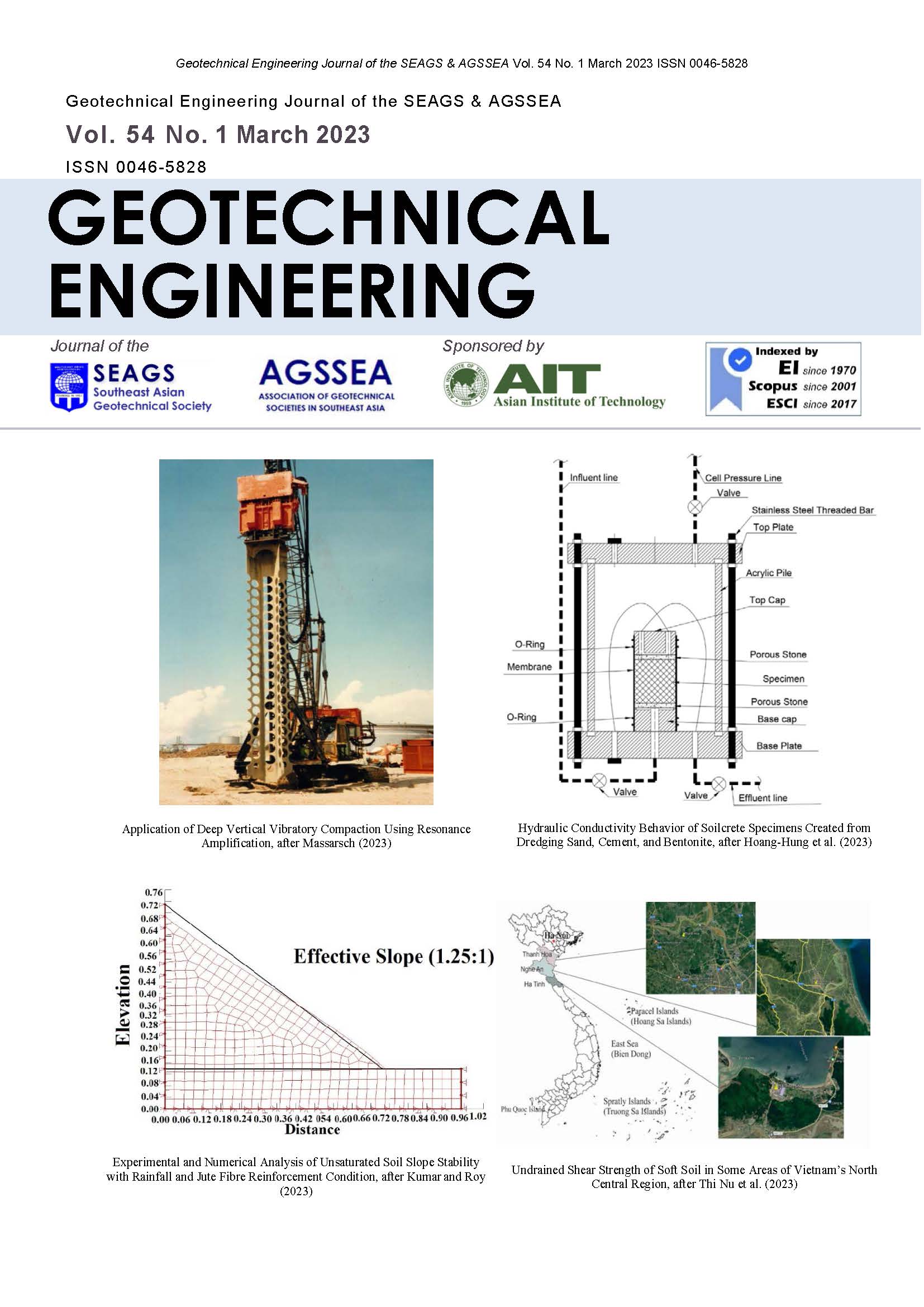Hydraulic Conductivity Behavior of Soilcrete Specimens Created from Dredging Sand, Cement, and Bentonite
Main Article Content
Abstract
Dredging sand is an inexpensive material utilized to rise elevations of highway embankments and earth levee bodies in the Southern Vietnam. However, the high permeability of the dredging sand can cause failures due to seepage flows during annual flood seasons. The dredging sand mixing cement with or without bentonite is expected to be suitable low permeability as an impermeable material. However, hydraulic conductivity of soilcrete and bentonite specimens created from dredging sand taken in the Mekong delta has limit research data. This study aims at better understanding of the hydraulic conductivity of the dredging sand samples taken in Dong Thap province mixed with cement and bentonite. The effects of the hydraulic conductivity of soilcrete and bentonite soilcrete specimens on time, cement contents, bentonite contents, cement types, and hydraulic gradients were investigated. The tests followed the ASTM D5084 standard using the both falling head-constant tailwater and falling head-rising tailwater methods. The results indicate that: (1) the hydraulic conductivity of the soilcrete and bentonite specimens decreased with increasing in testing duration and cement contents; (2) the hydraulic conductivity of the soilcrete specimens was lower 104 to 105 times than that of the compacted sand; (3) the hydraulic conductivity of the bentonite soilcrete specimens was lower 10 times than those of the soilcrete specimens; (4) the PCS cement can induce the long-term reduction of soilcrete permeability; (5) the effect of hydraulic gradients on soilcrete hydraulic conductivity was ignorable; (6) the soilcrete hydraulic conductivity varies from 10-9 to 10-10 m/s.
Article Details

This work is licensed under a Creative Commons Attribution-NonCommercial-NoDerivatives 4.0 International License.
Copyright © 2019 Association of Geotechnical Societies in Southeast Asia (AGSSEA) - Southeast Asian Geotechnical Society (SEAGS).


